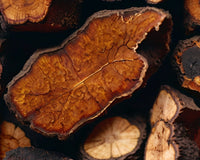What is cholesterol?
Cholesterol is a substance produced in the liver and is essential to human life. You can also get cholesterol through food. Since it cannot be produced by plants, you can only find it in animal products such as meat and dairy products.
In our body, cholesterol has three main uses:
- It contributes to the production of sex hormones.
- It is the cornerstone of human tissue.
- It helps the liver produce bile.
These are important functions and all depend on the presence of cholesterol. But too many good things are not good things at all.
Low-density lipoprotein and high-density lipoprotein
When people talk about cholesterol, they often use the terms LDL and HDL. Both are lipoproteins, which are compounds composed of fat and protein, responsible for carrying cholesterol in the blood throughout the body.
Low-density lipoproteins are low-density lipoproteins, commonly referred to as "bad" cholesterol. HDL is high-density lipoprotein, or "good" cholesterol.
Why is low-density lipoprotein bad?
Low-density lipoprotein is called "bad" cholesterol because too much can cause arteriosclerosis.
According to the American Heart Association, low-density lipoprotein causes plaque buildup on the arterial walls. When this plaque accumulates, it can cause two separate, equally bad problems.
First, it can narrow the blood vessels and strain the oxygen-rich blood flow throughout the body. Second, it can cause blood clots, which can rupture and block blood flow, leading to heart attacks or strokes.
When it comes to your cholesterol level, your LDL is the level you want to keep low-ideally less than 100 milligrams per deciliter (mg/dL).
Why is HDL good?
HDL helps keep the cardiovascular system healthy. It actually helps to remove low-density lipoproteins from the arteries.
It brings bad cholesterol back to the liver, where it is broken down and eliminated from the body.
High levels of HDL have also been shown to prevent strokes and heart attacks, while low levels of HDL have been shown to increase these risks.
According to the National Institutes of Health (NIH), HDL levels of 60 mg/dL or higher are considered protective, and HDL levels below 40 mg/dL are risk factors for heart disease.
Total cholesterol goal
When you check cholesterol, you will receive measurements of HDL and LDL, as well as measurements of total cholesterol and triglycerides.
The ideal total cholesterol level is less than 200 mg/dL. Any value between 200 and 239 mg/dL is a critical value, and any value higher than 240 mg/dL is very high.
Triglycerides are another type of fat in the blood. Like cholesterol, too much is a bad thing. But experts still don't know the specific situation of these fats.
High triglycerides are usually accompanied by high cholesterol and are associated with an increased risk of heart disease. But it is not clear whether high triglycerides are a risk factor.
Doctors usually weigh the importance of your triglyceride count based on other measurements (such as obesity, cholesterol levels, etc.).
Control these numbers
There are several things that affect your cholesterol levels-some of them are something you can control. Although genetics may play a role, so do diet, weight, and exercise.
Eating food is low in cholesterol and saturated fat, regular exercise and weight control are all associated with lower cholesterol levels and a lower risk of cardiovascular disease.





